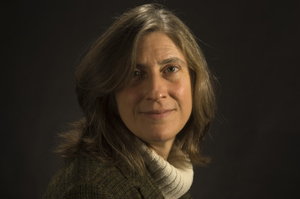November 3, 2008
CTG and Department of Communication Joint Paper Earns Top Information Sciences Prize
 |
|
A joint paper from CTG and the Department of Communication on the World Trade Center crisis earned top honors from the American Society for Information Science and Technology. |
The paper, Geographic information technologies, structuration theory, and the world trade center crisis was coauthored by Teresa M. Harrison, chair, Department of Communication, and CTG�s Theresa Pardo, deputy director, J. Ramon Gil-Garcia, research fellow, Fiona Thompson, former senior program associate, and Dubravka Juraga, former research associate. The purpose of this award is to recognize the best refereed paper published in the volume year of the Journal of the American Society for Information Science (JASIST). According to ASIS&T�s Web site, �The coveted and prestigious ASIS&T awards represent the greatest recognition and respect professionals may afford their colleagues.�
"We're honored to have received this award from ASIST, and particularly so for this paper, which recognizes the crucial role of geographic information technologies and collaboration in emergency response," said Teresa M. Harrison, chair, Department of Communication. "The extended examples presented in the paper illustrate the intense interchange of knowledge, meaning systems, and technological artifacts that took place among members of the GIS community, emergency responders, government officials, and politicians," said Theresa Pardo, deputy director of CTG. "The paper explores how in the course of doing so they shared perspectives on social reality at that moment, learned from each other, and engaged in a fertile period of technological innovation."
|
|
UAlbany Department of Communication chair Teresa M. Harrison. (Photo Mark Schmidt) |
The authors found that one lasting consequence of this episode was that GITs have moved from serving as a relatively static reference tool to a dynamic decision-making tool for emergency situations. They concluded by suggesting that the crisis was a catalyst for change in the use of GIT and, reciprocally, in the social structures in which GIT will be deployed in the future.
The paper was selected for the award by ASIS&T based on several criteria. The Awards & Honors Committee looked at its professional merit, which included creativity and originality, the scientific and professional quality of the research, and the scholarship embodied in the presentation. The award committee also equally took into account its contribution in terms of societal, scientific and technical significance, usefulness to practicing professionals, and its relevance to the interests of information science and technology, and to a lesser degree the professional quality of the paper.
ASIS&T has been the society for information professionals, leading the search for new and better theories, techniques, and technologies to improve access to information. The mission of the ASIS&T is to advance the information sciences and related applications of information technology by providing focus, opportunity, and support to information professionals and organizations. ASIS&T has existed for over 70 years and has members in over 50 countries worldwide.
![]() For more news, subscribe to UAlbany's RSS headline feeds
For more news, subscribe to UAlbany's RSS headline feeds




